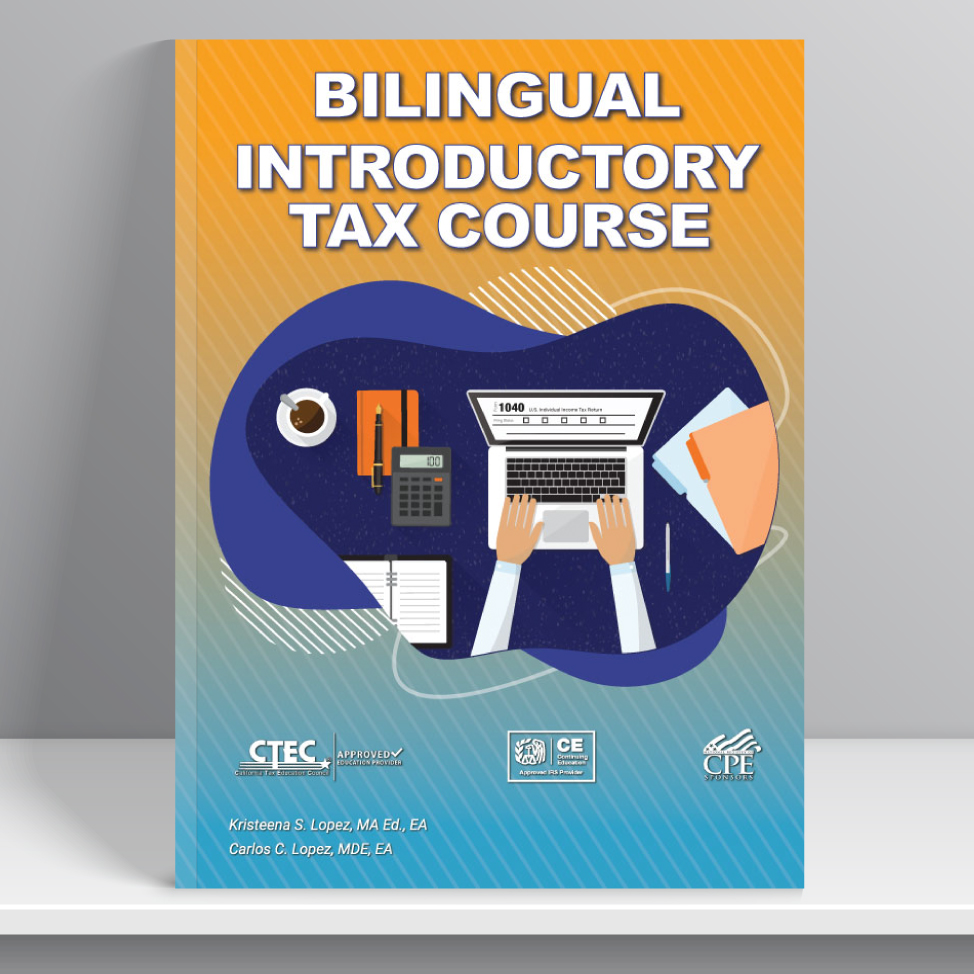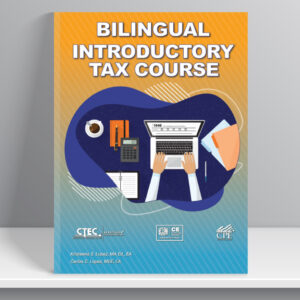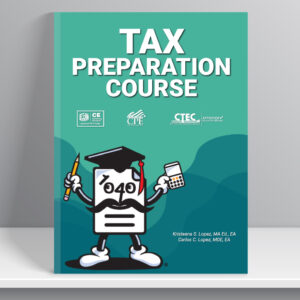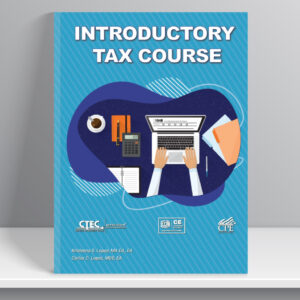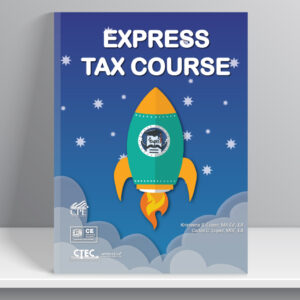Part I: Due Diligence and Penalties | Debida diligencia y sanciones
This chapter will cover tax preparer due diligence and penalties. When the taxpayer files a return with refundable credits the tax preparer needs to complete an accurate tax return and complete Form 8867, which is attached to the taxpayer’s return.
————————————————————–
Este capítulo cubrirá la diligencia debida y las sanciones del preparador de impuestos. Cuando el contribuyente presenta una declaración con créditos reembolsables, el preparador de impuestos debe completar una declaración de impuestos precisa y completar el Formulario 8867, que se adjunta a la declaración del contribuyente.
Part II: Federal Tax Law
Compiling Taxpayers Information
Preparing tax returns is an art; knowing which questions to ask will help determine the best tax situation for the individual. Just imputing information into software does not prepare an accurate tax return. The saying is true: “garbage in, garbage out”. Entering incorrect information so that the taxpayer receives a higher refund is not the best situation for you or the client. This chapter provides you with a brief overview of current year forms and sample questions to determine the best tax position for the taxpayer. Asking the taxpayer, the right questions from the beginning provides the tax preparer accurate answers needed to complete the tax return.
————————————————————–
La preparación de declaraciones de impuestos es un arte; saber qué preguntas hacer ayudará a determinar la mejor situación fiscal para la persona. La simple imputación de información al software no prepara una declaración de impuestos precisa. El dicho es cierto: “basura entra, basura sale”. Ingresar información incorrecta para que el contribuyente reciba un reembolso mayor no es la mejor situación para usted o el cliente. Este capítulo le brinda una breve descripción de los formularios del año actual y ejemplos de preguntas para determinar la mejor posición fiscal para el contribuyente. Hacerle al contribuyente las preguntas correctas desde el principio le brinda al preparador de impuestos las respuestas precisas necesarias para completar la declaración de impuestos.
Filing Status, Dependents, and Deductions
This chapter will present an overview of the Tax Cuts and Jobs Act standard deduction and what circumstances permit taxpayers to claim a higher standard deduction. You will also learn what an exemption is, what exemptions each of the filing statuses can claim, and how to identify a qualifying dependent.
————————————————————–
Este capítulo presentará una descripción general de la deducción estándar de la Ley de Reducción de Impuestos y Empleos y las circunstancias que permiten a los contribuyentes reclamar una deducción estándar más alta. También aprenderá qué es una exención, qué exenciones puede reclamar cada uno de los estados civiles de declaración y cómo identificar a un dependiente calificado.
Income
The IRS has the authority to tax all income from whatever source it is derived. This includes compensation for services, gains from dispositions of property, interest and dividends, rent and royalties, pensions and annuities, gambling winnings, and even illegal activities. All such income a person receives is collectively referred to as “worldwide income.” However, not all money or property is taxable or subject to tax. This chapter will cover the different types of taxable and nontaxable income and show you where and how to report such wages on a professionally prepared tax return. A tax professional must recognize the different kinds of taxable income, tax-exempt income, and other income included in Schedule 1, line 21, and must know how to figure out the taxable percentage on Social Security benefits.
————————————————————–
El IRS tiene la autoridad para gravar todos los ingresos de cualquier fuente que se derive. Esto incluye la remuneración por servicios, ganancias por disposiciones de propiedad, intereses y dividendos, alquileres y regalías, pensiones y anualidades, ganancias de juego e incluso actividades ilegales. Todos los ingresos que recibe una persona se denominan colectivamente “ingresos globales”. Sin embargo, no todo el dinero o propiedad es gravable o sujeto a impuestos. Este capítulo cubrirá los diferentes tipos de ingresos gravables y no gravables y le mostrará dónde y cómo declarar dichos salarios en una declaración de impuestos preparada profesionalmente. Un profesional de impuestos debe reconocer los diferentes tipos de ingresos gravables, ingresos exentos de impuestos y otros ingresos incluidos en el Anexo 1, línea 21, y debe saber cómo calcular el porcentaje imponible sobre los beneficios del Seguro Social.
Tax Credits and Payments
A nonrefundable tax credit reduces the amount of tax liability that may have to be paid. Unlike a deduction, which reduces the amount of income that is subject to taxation, a credit directly reduces the tax itself. There are two types of credits: nonrefundable, which cannot reduce tax liability below zero, and refundable, which can reduce tax liability below zero, resulting in the need for a refund.
————————————————————–
Un crédito fiscal no reembolsable reduce el monto de la obligación tributaria que debe pagarse. A diferencia de una deducción, que reduce la cantidad de ingresos sujetos a impuestos, un crédito reduce directamente el impuesto en sí. Existen dos tipos de créditos: no reembolsables, que no pueden reducir la responsabilidad fiscal por debajo de cero, y reembolsables, que pueden reducir la obligación tributaria por debajo de cero, lo que resulta en la necesidad de un reembolso.
Adjustments to Income
In this chapter, students will learn how various expenses are used to “adjust” or lower the taxpayer’s income to arrive at his or her adjusted gross income (AGI). They will also learn how the Tax Cuts and Jobs Act (TCJA) has impacted adjustments at the federal level and how to handle any previous-year returns that preceded those TCJA-mandated changes.
————————————————————–
En este capítulo, los estudiantes aprenderán cómo se utilizan los diversos gastos para “ajustar” o disminuir los ingresos del contribuyente para llegar a su ingreso bruto ajustado (AGI). También aprenderán cómo la Ley de Reducción de Impuestos y Empleos (TCJA) ha impactado los ajustes a nivel federal y cómo manejar las declaraciones del año anterior que precedieron a los cambios exigidos por la TCJA.
Itemized Deductions
When computing taxable income, personal expenses cannot be claimed as itemized deductions; however, tax rules do allow for some deductions that are essential for daily living. These specific expenses are deductible as itemized deductions. A standard deduction is a set amount that the taxpayer can claim based on his or her filing status. Itemized deductions are shown on the tax return using Schedule A, Itemized Deductions. The taxpayer must decide whether to itemize deductions or use the standard deduction and should choose whichever option is best for their tax situation.
————————————————————–
Al calcular el ingreso gravable, los gastos personales no pueden reclamarse como deducciones detalladas. Sin embargo, las reglas de impuestos permiten algunas deducciones que son esenciales para la vida diaria. Estos gastos específicos son deducibles como deducciones detalladas. Una deducción estándar es una cantidad fija que el contribuyente puede reclamar en función de su estado civil de declaración. Las deducciones detalladas se muestran en la declaración de impuestos utilizando el Anexo A, Deducciones detalladas. El contribuyente debe decidir si detallar las deducciones o usar la deducción estándar y debe elegir la opción que mejor se adapte a su situación fiscal.
| Course Details | Included in this course |
| Title: 2023 Bilingual Introductory Tax Course Level: Basic Delivery Method: Self-study To earn certificate of completion: • Pass Final with 70% (or better) • Complete course survey |
• 2-Part eBook • Videos • Practice Tax Return • Final Exams |

